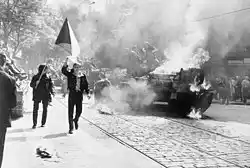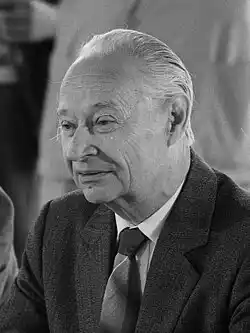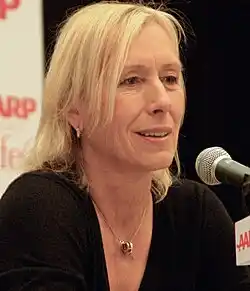
The Prague Spring refers to a period in the history of Czechoslovakia in 1968. It came about as a result of efforts by the Czechoslovak communist establishment to liberalize their country’s political system. This necessarily implied a move away from being controlled by the Soviet Union and the Warsaw Pact. However, unlike communist Yugoslavia and Romania, which were allowed to drift away from Russian influence in the aftermath of the Second World War, Moscow cracked down violently on the Prague Spring. In August 1968 hundreds of thousands of Soviet and allied troops invaded Czechoslovakia and crushed the liberal reform movement. Czechoslovakia’s government was overhauled and Moscow loyalists were installed. It would remain under the firm control of the USSR until the Velvet Revolution of November 1989 towards the end of the Cold War. The Prague Spring led to the flight of about 100,000 Czechs and Slovaks from Czechoslovakia in 1968 and 1969, with most leaving for western countries like Austria, Germany, France, Britain, the United States and Canada.[1]
Research your ancestors on MyHeritage
Prague Spring chronology of eventsPrague Spring chronology of events
Czechoslovakia emerged as an independent nation in 1918 as the Austro-Hungarian Empire that had ruled over what were historically known as Bohemia and Moravia collapsed at the end of the First World War. It remained an independent nation for the next two decades before being annexed by Nazi Germany in 1939 before the Second World War broke out.[2] At the end of the war Prague was the last major city to hold out in occupied Europe. Fighting continued there even after the German surrender and Prague was only finally liberated by the Czech resistance with the aid of the Soviet Red Army on the 11th of May 1945. Like other countries in Eastern and Central Europe and the Balkans that the Russians had liberated, Czechoslovakia fell into the Soviet camp in the building Cold War in the second half of the 1940s. The communist party seized full power in February 1948 and took much of its direction thereafter from Moscow. In 1955 the Czechoslovak Socialist Republic was a founding member of the Soviet military alliance, the Warsaw Pact.[3]

The Prague Spring came about owing to efforts amongst the Czechoslovak communist leadership to break away from overt dominance by Moscow. In January 1968 Alexander Dubcek entered office as the First Secretary of the Communist Party of Czechoslovakia, making him the effective leader of the country. He commenced a wide-ranging reform program centered on the idea of ‘socialism with a human face’.[4] The changes which were introduced through the spring and summer of 1968 included liberalization of the media and an acknowledgement of the excesses of the Stalinist era, while changes to the economic and political system were also undertaken to limit the rigid policy approach that had developed over the past twenty years. As these efforts were initiated without the approval of Moscow, the Prague Spring necessarily involved a drift away from the Soviet Union towards establishing a more independent communist state in the same vein as Yugoslavia and Romania.[5]
In Moscow the government of Leonid Brezhnev refused to accept these changes. They consequently called on their allies in the Warsaw Pact to engage in a joint operation against Czechoslovakia. The Russians could have acted alone, but a joint action leant their intervention a greater air of supposed legitimacy. Thus, when the Soviets invaded Czechoslovakia on the 20th of August 1968, they did so in conjunction with Polish, Hungarian, Bulgarian and East German troops. Both Romania and Albania, which were members of the Warsaw Pact, refused to co-operate and largely left the Pact after expressing support for Czechoslovak actions. Over 200,000 troops moved into Czechoslovakia in the initial invasion, with the overall show of force reaching nearly half a million in the weeks that followed.[6]
The Warsaw Pact invasion of Czechoslovakia led to the swift crushing of the Prague Spring. 137 civilians were killed in the suppression and hundreds more were wounded. Yet the Soviets were also conscious of the need to act in a conciliatory fashion. Therefore Dubcek was not immediately removed from his position as First Secretary. He remained in office until April 1969, though the reforms of the Prague Spring were rowed back on in the months after the invasion. Under his successor, Gustáv Husák, who headed the government of communist Czechoslovakia for most of the remainder of the Cold War era, a process of ‘normalization’ was undertaken, whereby the country returned to being a de-facto vassal or satellite of the Soviet Union.[7]
Extent of migration caused by the Prague SpringExtent of migration caused by the Prague Spring

The Prague Spring and the invasion of Czechoslovakia by the Warsaw Pact forces in 1968 led to a significant wave of outward migration from the country as people fled the coming repression. The number of people who left in the immediate aftermath of the military operation topped 70,000 and may have reach near 100,000 by the end of the 1960s. This constitutes half of all Czechs and Slovaks who left their country during the Cold War era. Some crossed over the border to Austria or West Germany, while others went further still to Britain, France, the United States and Canada. For instance, 12,000 Czechoslovak refugees settled in Canada alone.[8]
To a certain extent the migratory implications of the Prague Spring were still being felt in the 1970s. For instance, the tennis star, Martina Navratilova, who hailed from Czechoslovakia, defected to America in 1975. Although this came seven years after the Prague Spring, she later cited the crackdown of 1968 and the repressive socio-political environment in Czechoslovakia thereafter as a motive for defecting.[9]
Demographic impact of the Prague SpringDemographic impact of the Prague Spring
The demographic impact of the Prague Spring was modest and was not concentrated in any one specific place. For instance, while many of those who left the country understandably headed west over the border to Austria, there were many who went further afield to places like West Germany, France, Britain, the United States and Canada, while Jewish Czechs settled in Israel. While this contributed to a Czech and Slovak diaspora abroad, there were many who returned home to Czechoslovakia in the early 1990s after the Velvet Revolution, and then the Czech Republic and Slovakia after Czechoslovakia split into two countries in 1993. Thus, while the Prague Spring led to a considerable wave of migration from Czechoslovakia, some of it was transient. Many people in countries like Austria, Britain, Canada, the US and Israel will still have a parent or grandparent who left Czechoslovakia in 1968 and 1969 as a direct result of the Prague Spring.[10]
Research your Czech and Slovak ancestors on MyHeritageResearch your Czech and Slovak ancestors on MyHeritage
Research your ancestors on MyHeritage
See alsoSee also
Explore more about Prague SpringExplore more about Prague Spring
- Czechia Newspapers from OldNews.com records collection on MyHeritage
- Soviet Union, Award Records, 1939-1991 records collection on MyHeritage
- Beginning Slovak Genealogy Research at Legacy Family Tree Webinars
References
- ↑ https://www.history.com/news/prague-spring-czechoslovakia-soviet-union
- ↑ https://english.radio.cz/legacy-czechoslovakias-inter-war-republic-8590726
- ↑ https://www.bbc.co.uk/news/world-europe-17220572
- ↑ Anna J. Stoneman, ‘Socialism With a Human Face: The Leadership and Legacy of the Prague Spring’, in The History Teacher, Vol. 49, No. 1 (November, 2015), pp. 103–125.
- ↑ https://www.history.com/news/prague-spring-czechoslovakia-soviet-union
- ↑ https://www.rferl.org/a/crushing-of-prague-spring-1968/29420107.html
- ↑ Zuzana Polackova and Pieter C. van Durin, ‘Gustáv Husák and the Foundations of ‘Normalization’: Slovak, Czechoslovak and Federative Perspectives, 1968–1970’, in Slavonica, Vol. 24 (2019), pp. 36–51.
- ↑ https://pier21.ca/research/immigration-history/prague-spring-refugees
- ↑ http://www.worldtennismagazine.com/archives/3532
- ↑ https://blog.nationalarchives.gov.uk/records-of-czechoslovakian-refugees-to-the-uk-from-1939-to-1975/

